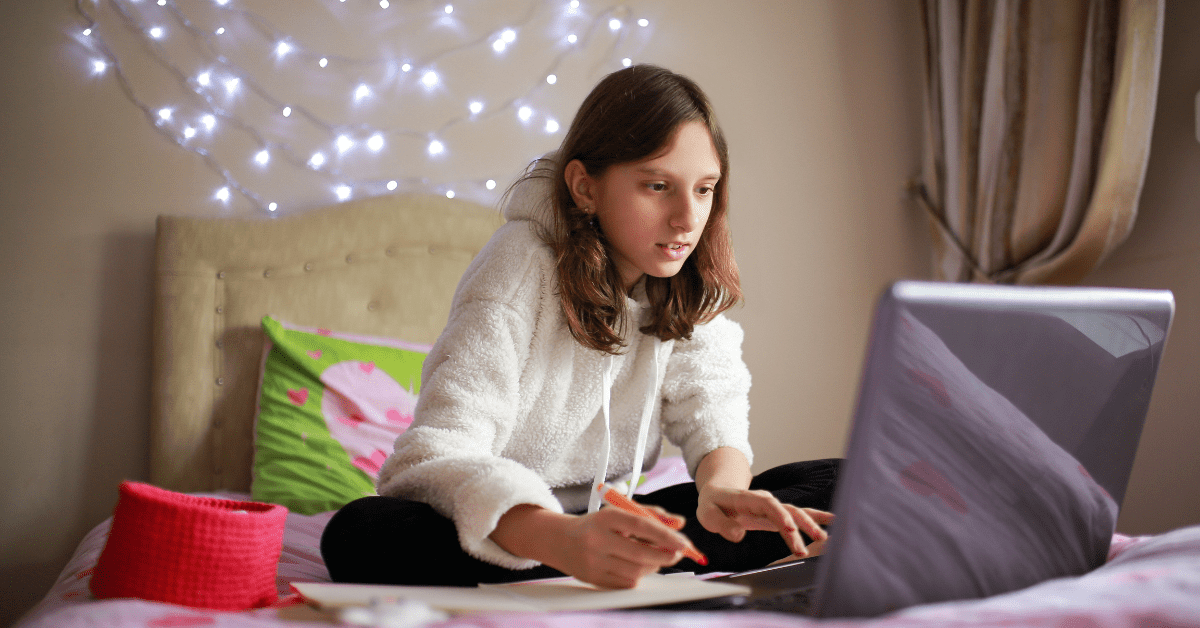Online therapy or teletherapy allows patients to connect with a mental health provider online rather than in person. These virtual visits occur over the internet with a computer, tablet, or smartphone.
Teletherapy is not a new concept, but it’s become increasingly popular since the start of the COVID-19 pandemic. In this article, we’ll break down some of the reasons why online therapy is a valuable treatment option for children, teens, and young adults.
The History of Teletherapy
Teletherapy has been used for years — even before the 2020 pandemic — as a therapy method for veterans with PTSD wanting to avoid public or crowded places, to help them overcome some of the barriers that may come with seeking mental healthcare.1
Since the start of the COVID-19 pandemic, online therapy has become increasingly popular, and families have started taking advantage of these services for their children and teens.
Academic research shows that teletherapy provides the same quality of care as traditional therapy. According to the American Psychological Association, teletherapy is as effective as in-person sessions for treating various mental health conditions, including depression and anxiety.
96% of teletherapists surveyed agreed that teletherapy was an effective treatment, and 93% intended to continue to offer teletherapy post-pandemic.2
At Backpack Healthcare, we believe teletherapy works best for children and their families. Here are four main reasons why:
1. Younger Generations Prefer Virtual Communication
The younger generations have grown up with technology. They’re attached to their phones. With telehealth sessions, they can feel like they’re talking with a friend.
At Backpack Healthcare, we use innovative age-appropriate technology to keep kids engaged and make sessions fun and interactive, such as virtual sandboxes and play therapy.
2. Teletherapy Removes the Stigma of “Going to Therapy”
Many adolescents fear that their friends will find out they go to therapy, and for most, that can be embarrassing. With telehealth, we eliminate this barrier.
Children and teens can complete their sessions in the comfort of their own home, or wherever is most convenient for them.
3. Teletherapy Allows Parents and Caregivers to Get Involved
With teletherapy, it’s easier than ever for parents, guardians, and caregivers to get directly involved in a child’s care and be part of their treatment plan if need be.
This allows for a collaborative approach, which is extremely helpful for pediatric mental healthcare.
4. Teletherapy Helps Kids and Teens Feel Comfortable
It’s not always comfortable to talk to someone new about your feelings. With teletherapy, kids and teens often feel more relaxed and open to sharing when they’re in the privacy of their homes.
5. Teletherapy Fits into Kids Busy Schedules
Being able to log into therapy without traveling to a therapist’s office allows busy families the flexibility of fitting treatment into their lives. All they need is a device connected to the internet, and they can attend the sessions from the comfort of their home.
Access Inclusive, Comprehensive Teletherapy with Backpack Healthcare
Whether you have tried online therapy before or are still apprehensive about the model, the bottom line is that teletherapy provides access to mental healthcare with comfort and convenience, and it is an effective way for children and teens to receive the mental healthcare services they need.
At Backpack Healthcare, our unique behavioral and mental healthcare model gives teens and their families greater access to care by making intervention faster, making appointments easier to schedule, and helping everyone understand that emotional and behavioral health isn’t something to be ignored.
If you’re in the state of Maryland and interested in learning more about Backpack’s teletherapy services, get in touch with us here.
References
1Study on Veterans using Teletherapy to treat PTSD https://www.aamc.org/news-insights/veterans-telehealth-offers-access-convenience
2American Psychological Association survey https://www.apa.org/pubs/reports/practitioner/covid-19-2021

